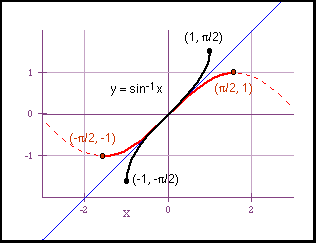RadiansWhen measuring degrees it is often easier and more accurate to do so using radians as a unit.
Definition of a Radian:
If you want to convert an angle measured in degrees to radians, follow this process:
An example using an angle with a measure of 30°:
The process can also be used in reverse:
Standard PositionFirst, lets look at the rotation of angles.
Positive Rotation: counter-clockwise
Negative Rotation: clockwise
All angles have a terminal side and an initial side:
For an angle to be in standard position it must meet the following criteria:
1. Vertex at the origin
2. Initial side on x-axis
Trigonometric FunctionsRemember SOHCAHTOA:
Special Cases30-60-90 triangles:

45-45-90 triangles:
Unit Circle:The Unit Circle shows different measurements of angles, and their positions on a graph with a circle centered around the center of a graph and with a radius of 1.
The Unit Circle is based off 30-60-90 and 45-45-90 triangles.
Even and Odd FuntionsAll Triganometric funtions are even or odd.
Even Functions:

cosine
secant
Odd Funtions:

sine
tangent
cosecant
cotangent


 =
=














